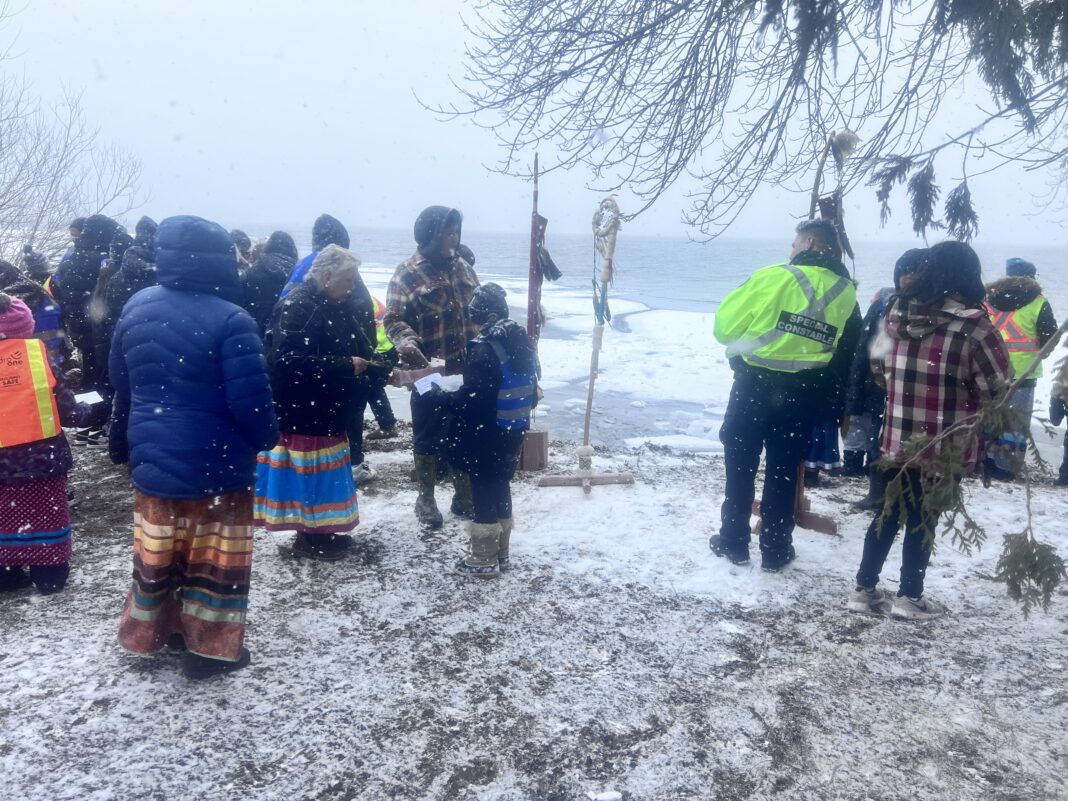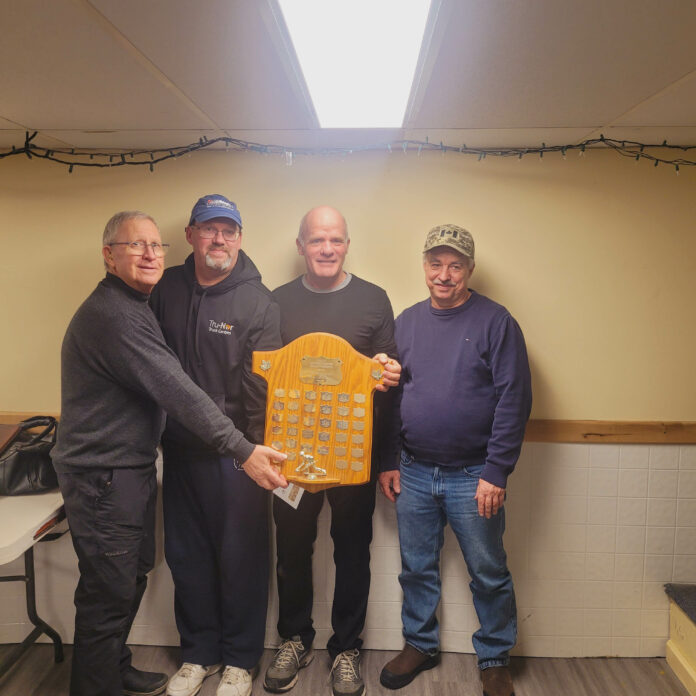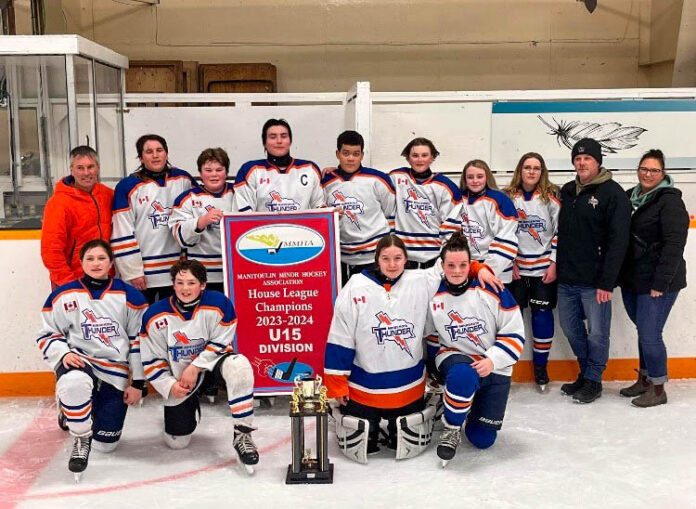M’CHIGEENG—On Friday, March 22, Lakeview Elementary school hosted its annual water walk with school children and community members alike. The tradition was started in 2003 by Josephine Mandaamin baa, the Chief Commissioner of the Anishinabek Nation Women’s Water Walk Commission, a member of the Great Lakes Guardian Council. Since 2003, Ms. Mandamin walked the shorelines of all the Great Lakes, approximately 27200 km, before passing in 2019, a day after her 77th birthday.
Kimberly Debassige, Crow Clan and director of education at M’Chigeeng First Nation guided the ceremony. She sat down with The Expositor to discuss the importance of the water walk.
“As Anishinaabek, when we do these ceremonies, when we connect like this it gives us a greater sense of purpose and understanding. Today is World Water Day, we know that our water has been in crisis, our waters are not well, based on all these conveniences of life that, I think, have gotten in the way of our concept of responsibility for Creation,” Ms. Debassige said.
Although Indigenous peoples constitute only five percent of the global population, they account for approximately 15 percent of the world’s extreme poor. Remarkably, despite the relatively small population share, Indigenous communities are safeguarding an impressive 80 percent of the world’s remaining biodiversity, as highlighted in Australia’s 2021 State of the Environment report.
“As Director of Education, I think it’s important that our young people understand these things, that their lives have been called here by all these generations past,” Ms. Debassige continued. “It gives a sense of purpose, identity and responsibility to the land, to the waters, to the fire and to the winds, the four gifts that we have been given responsibility for. This ceremony is about offering something back to the Water Spirits that look after those waters, that clean those waters, that govern those waters. They understand those underground water ways that are connected. A ceremony like a water walk is for us to put ourselves back into relationship with that.”
Several students were selected to carry the large copper vessel containing water from Otter Lake, handing it off to one another until they reached Lake Mindemoya, to “introduce that water in ceremony, bringing the waters together so they can speak to each other and inform each other about how well they are.” Once the water is picked up, it has to keep moving, symbolizing the flowing of a river “how we emulate that when we walk with the water.”
When the group arrived at the shore of Lake Mindemoya, Ms. Debassige removed her shoes and socks and walked into the cold lake that still had pieces of ice, carrying a bundle of offerings while Lynne Miigwans, an elder from the community, held the large copper vessel above her head, making prayers. Another elder handed out tobacco for participants to pray with a release into the waters while a ceremonial song was sung.
Ms. Debassige emphasized the importance of nurturing relationships with nature, underscoring the need for communal involvement in environmental conservation, saying that “if we don’t spend the time we disconnect ourselves from the elements of Creation.”
“Our children really need to know that they are much more than they are in the moment—a student of Lakeview School—they are our future ancestors, they are our future leaders, they are leaders today when they use they voice to say ‘this is something really important, can we do something.’ So that’s what today brings and we know that people all across the world have waters that are in crisis. Once I met with someone while I was doing a water ceremony in Kingston, Ontario and she handed me water from the Ganges River in India. She had gone there and people had been praying to that water for many years. That water is very, very polluted and leaders, spiritual leaders, women, grandmothers, men, grandfathers go to the waters and do ceremony there. So, I carried that water for a little while, thinking about ‘what does this mean for our young people,’ beyond the next seven generations. I hope our young people can see themselves becoming really old people, and that when they close their eyes they can visualize all their subsequent generations forward and give thanks and gratitude back to all those precedent generations that came before.”
Globally, over 3 billion people face the threat of disease due to uncertain water quality in their rivers, lakes and groundwater, stemming from inadequate data. Concurrently, a significant portion of the world’s river basins undergo substantial fluctuations in water availability, with 2.3 billion individuals residing in nations categorized as “water-stressed,” including 721 million in areas facing “critical” water situations, as per recent findings by the United Nations Environment Programme (UNEP) and collaborators.
Traditionally, there has been a dearth of data concerning the global condition of freshwater ecosystems. To bridge this gap, UNEP employed Earth observation technologies for long-term monitoring of freshwater ecosystem dynamics. A survey spanning 89 countries examined over 75,000 bodies of water, revealing severe pollution in over 40 percent of them.
These revelations, unveiled during a high-level UN gathering on the water-related objectives in 2021, underscore a global lag in delivering safe drinking water universally. UNEP’s data signals a departure from the trajectory necessary to achieve sustainable water management by 2030, necessitating a doubling of efforts over the next nine years to meet the mandate for “the availability and sustainable management of water and sanitation for all.”
For decades, Indigenous communities have been advocating for the protection of water, recognizing its significance beyond mere hydration. To them, water embodies life and possesses a sacred spirit. It serves as the vital essence coursing through lakes, rivers, and oceans, nurturing crucial ecosystems and facilitating transportation since pre-colonial times. Despite human development encroaching upon certain water sources, there are still pristine areas untouched by such influence, and Indigenous peoples persist in their efforts to safeguard these invaluable resources for the well-being of future generations.
Ms.Debassige also emphasized that responsibility for the lands and waters transcends racial boundaries, saying, “It goes beyond stewardship of the land. Everybody was a steward of the land, because everybody had to eat from the land, no matter if they are Anishnaabek or not. Everybody has to have clean drinking water, everybody had to hunt, everybody had to find medicines all across the world. Everyone is a steward of the land, this is all we have for our home.”






